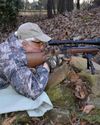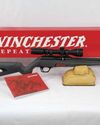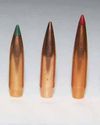
Between the black-powder era and the age of smokeless, there lies a fascinating but heretofore under-reported period ruled by shades of gray. Contrary to what some would have us believe, black powder did not disappear from use overnight in 1898, nor did smokeless powder take over with the suddenness of a military coup. There was a long period of overlap, underlap, and what we might call combo-lap.
This last was the couple of decades in which target shooters, especially, experimented with, and often triumphed, using “duplex” loads combining black and smokeless or “white” powder. In fact, early smokeless powders came in a range of colors, including gray, beige, orange and pink, as well as whitish, but since none of them were black, they were lumped together as “white.”
The first smokeless powder was invented by Captain Edward Schultze of the Prussian Artillery in 1856 – 40 years before it came into general use. This was followed by independent developments by experimenters in several countries, most of them driven by a desire to come up with a powder suitable for military use. Ballistic considerations aside, even the earliest smokeless powders had two great advantages over black: They did not enshroud a battlefield in clouds of smoke, and greatly reduced the need for cleaning.
This story is from the January - February 2021 edition of Rifle.
Start your 7-day Magzter GOLD free trial to access thousands of curated premium stories, and 8,500+ magazines and newspapers.
Already a subscriber ? Sign In
This story is from the January - February 2021 edition of Rifle.
Start your 7-day Magzter GOLD free trial to access thousands of curated premium stories, and 8,500+ magazines and newspapers.
Already a subscriber? Sign In

CIMARRON .32-20 Short Rifle & Carbine
In the heyday of Winchester Repeating Arms Company lever guns, it offered muskets, standard rifles, short rifles and saddle ring carbines.

Remington's Model 722 and .222 Cartridge
It's easy enough to define what a varmint is, those pesky critters that tear up pastures, flower beds and all kinds of expensive crops people need for various reasons - most importantly, to make a living and/or something with which to feed themselves.

Coyote Bullets
What is Best for You?

Remington's 5mm Rimfire Magnum
Shooting a Classic

Winchester's New Wildcat
The Ultralight Rimfire Varmint Rifle

.223 Remington from .30-30 Winchester?
Multitasking for Varmints

LOADS FOR A .22 TCM
The .22 TCM first appeared commercially in 2012, chambered in a Rock Island Armory 1911-style handgun.

Everybody Loves Velocity
The 4,500-fps WSSM Project

A BOLT-ACTION FRANCHI 224 VALKYRIE
Testing New Loads

.22 Winchester Magnum Rimfire
Shooting Revolvers